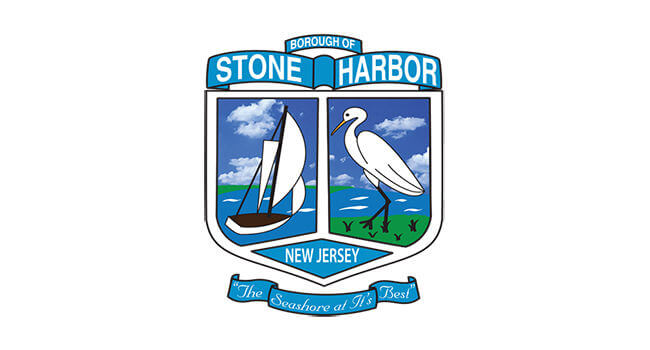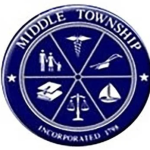STONE HARBOR – The Stone Harbor Property Owners Association (SHPOA) made public an analysis of the cost associated with the next five years of necessary sustainability projects April 29.
The report estimates that adapting to sea level rise and chronic flooding is going to come with an estimated $47 million in new spending between now and 2027.
SHPOA’s analysis sees the needed capital spending coming largely from debt issues, driving the borough’s debt obligation by 2027 to $70.7 million from its current level of $31.1 million. The analysis projects that debt service costs will increase by 81%, making debt service payments 39% of the borough’s operating budget in 2027.
The report goes on to discuss the impact on the local purpose tax rate. The projection is that the median value home will see a 46% hike in municipal taxation.
The analysis represents a five-year projection of sustainability efforts in a community of just over 2 square miles, with less than 800 permanent residents and roughly 3,200 housing units. The report makes clear that there will be an additional expense in the years that follow from 2027.
The analysis is meant to spark a dialogue among the property owners who have over $5 billion of investment in the tiny, elite, ocean-fronting community.
The SHPOA team that produced the report acknowledges that the numbers represent one scenario. The analysis is malleable and can respond to changes in strategy and policy. It is also vulnerable to alterations in the environment that drive its assumptions.
Interest rates, service arrangements, state and federal infrastructure funds, and operating revenue sources other than taxation are just some of the variables that can impact the financial impact of the sustainability effort.
SHPOA is an active homeowner’s association that has been pushing for better planning in response to environmental change. It has approximately a third of the homeowners in the borough as members. In its advocacy on important issues affecting the borough, the association seeks to communicate its members’ views to borough leadership. The association’s website gives central billing to the need to address sustainability issues with a call for commitment “to taking action to resolve these problems now.”
The new financial analysis calls for a conversation, one that SHPOA wants to start sooner rather than later.
The Timing of SHPOA’s Report
The SHPOA report came out just after the borough adopted its 2022 no tax increase budget and just as the governing body accepted a borough-developed flood mitigation plan that called for $32 million in municipal spending on sustainability projects over the next 10 years. The scopes of the borough and SHPOA reports are not the same, so the numbers are not easily reconciled by the layman.
What is clear is that borough officials and the SHPOA report team were in frequent communication and were aware of each other’s work. Overlapping areas do reconcile. Both documents are available to the public.
The development of the borough’s flood mitigation plan was led by borough engineer Marc DeBlasio and is accessible from the borough website. The much shorter SHPOA report is publicly available on the association’s website.
The borough flood mitigation plan is a technical document that lays out recommendations and options for capital sustainability projects. While it places estimates on those proposed projects, it does not try to integrate its estimates into a plan for financing them, nor does it aim to discern the impact of those expenses on the borough’s financial structure and tax rates.
The SHPOA report lists needed projects without detailed specifics. Its focus is on the financial implications of the likely spending.
The SHPOA report is really the association’s production of the kind of financial report SHPOA has been asking the borough to develop for several years. The borough has, on several occasions, committed to producing a 10-year financial plan, but if one exists, it has never been shared in a public forum.
On differences in scope, it is also important to note that the SHPOA report incorporates sustainability topics that are not covered in the flood mitigation plan estimates of costs. Among those are estimated costs for ongoing beach replenishment and bayside dredging.
What Now?
A governing body meeting May 3, the Tuesday following the release of the SHPOA document, saw no discussion of the association’s report.
Borough Councilman Reese Moore reported on the status of several items having to do with budgeting and finance. He mentioned the receipt of the SHPOA analysis, called it valuable, and thanked the organization for its efforts.
Ironically, Moore had just given a status report on several budgetary study areas that the council assigned to the borough administrator and chief financial officer almost a year ago.
Among those items requested by the council May 4, 2021, was a 10-year projected capital budget and a Strengths, Weaknesses, Opportunities, and Threats (SWOT) analysis of the capital budget.
A 2021 Open Public Records Act request returned a borough document that had both items scheduled for completion by November 2021. There has been no public discussion of either of these assigned studies at borough council meetings until Moore’s general remarks a year later.
Two documents now sit before the borough’s governing body. They both project high levels of new expense over a relatively short period. The SHPOA report puts the potential tax implications of the sustainability effort front and center for its members.
To contact Vince Conti, email vconti@cmcherald.com.








